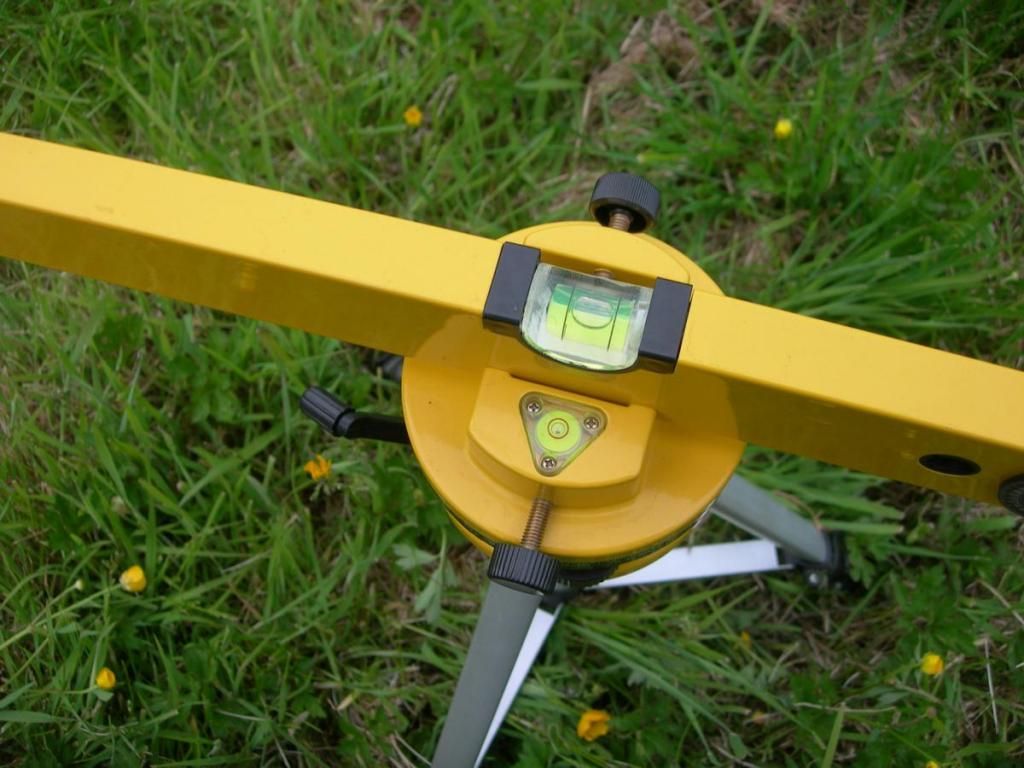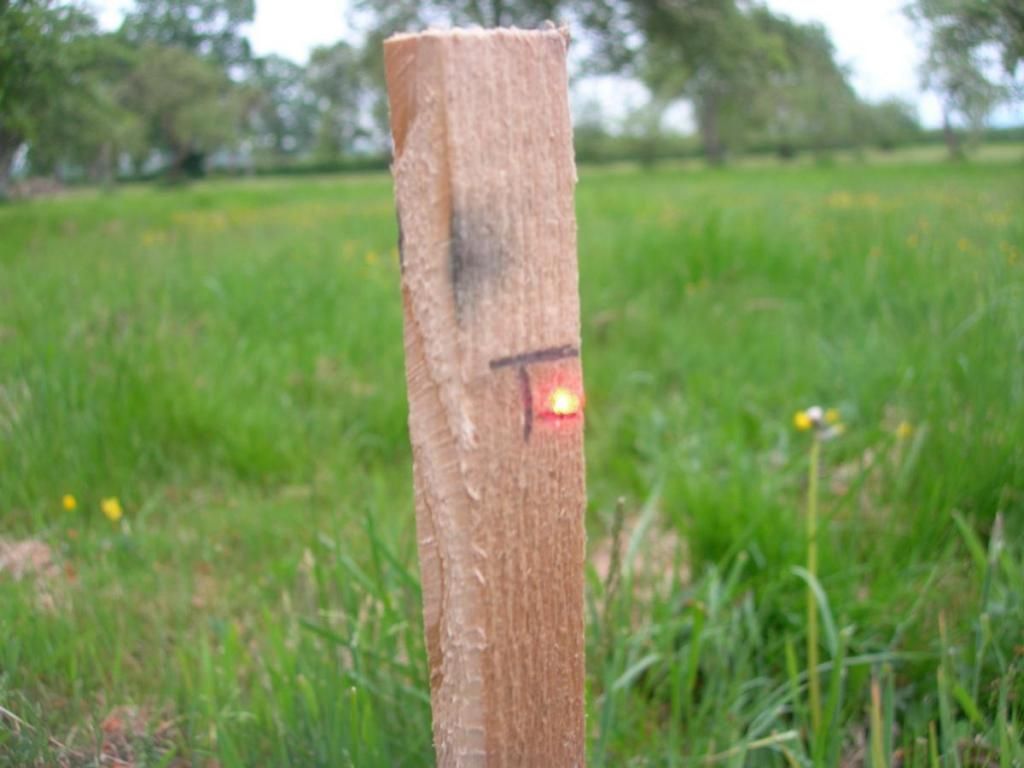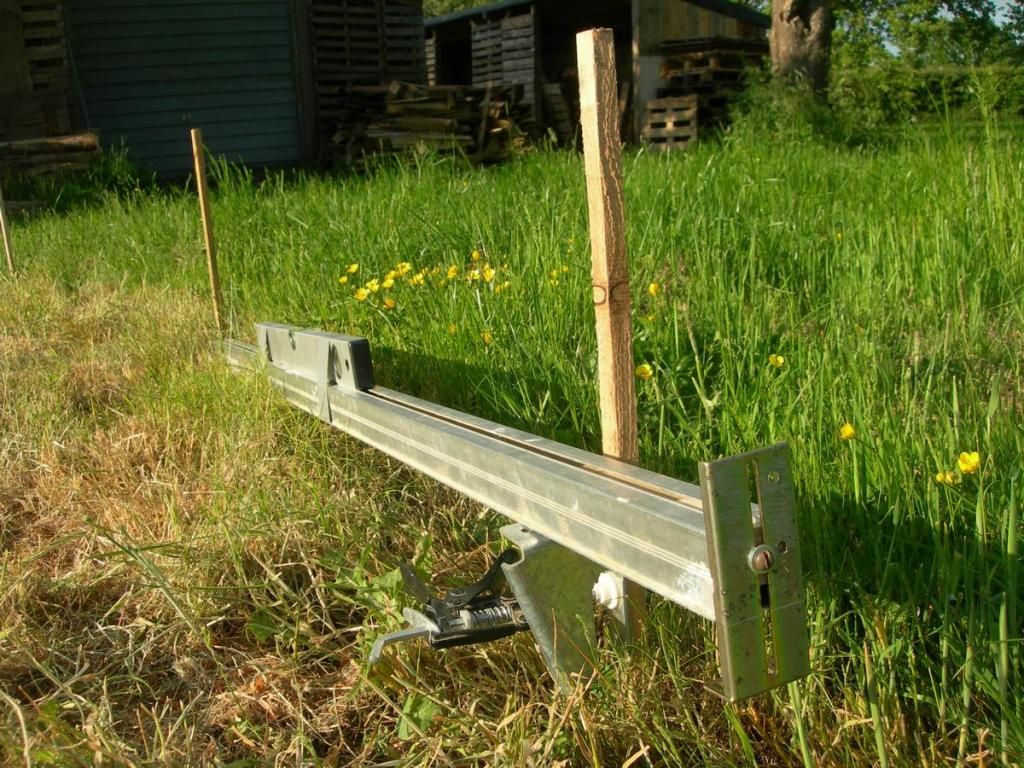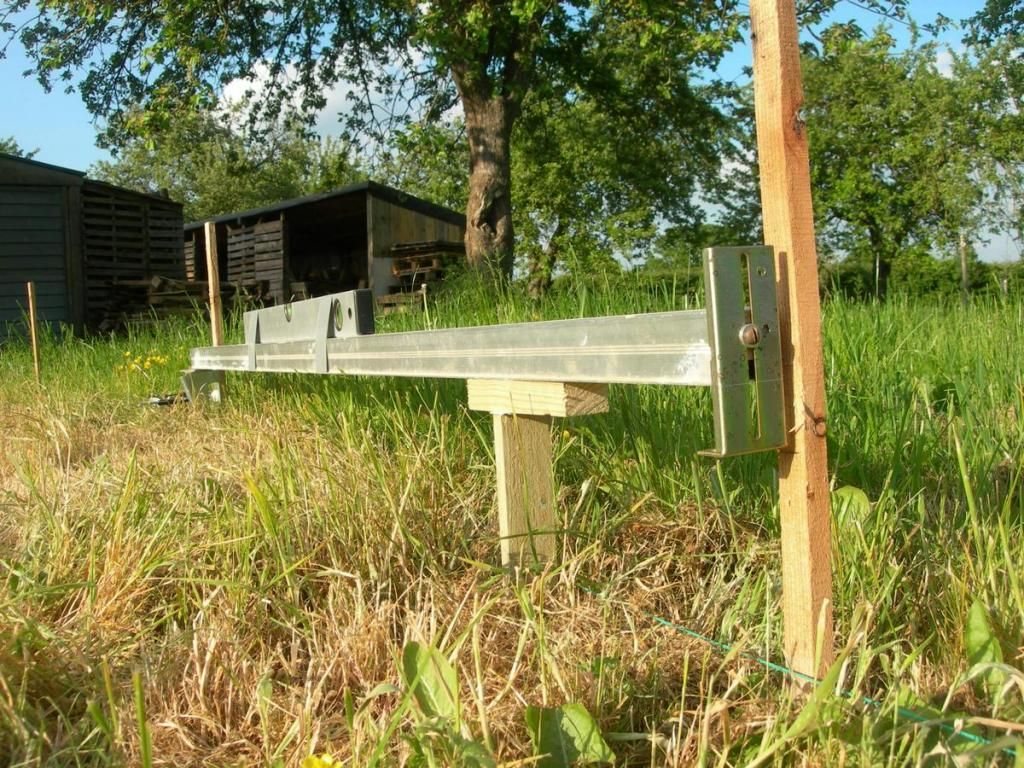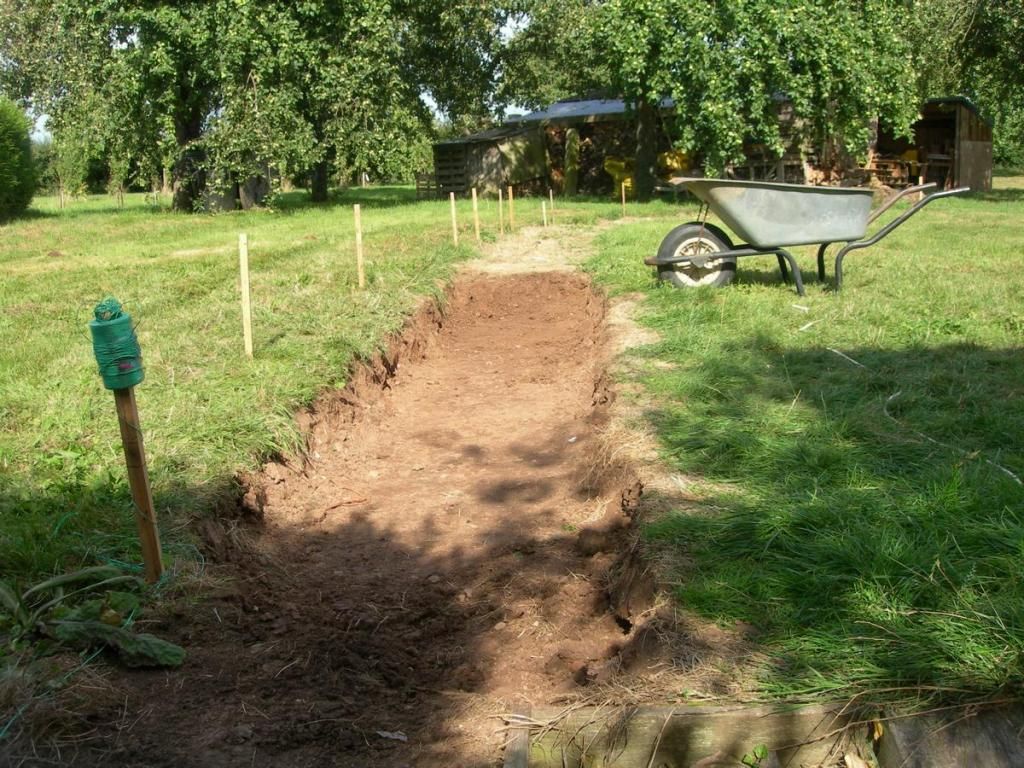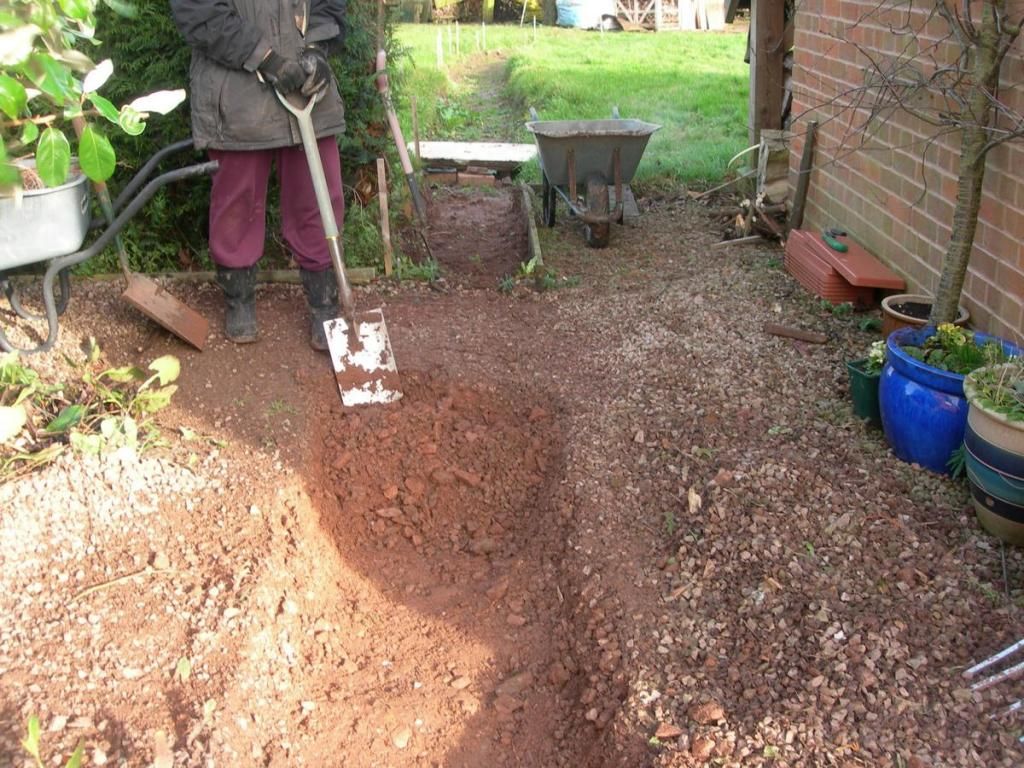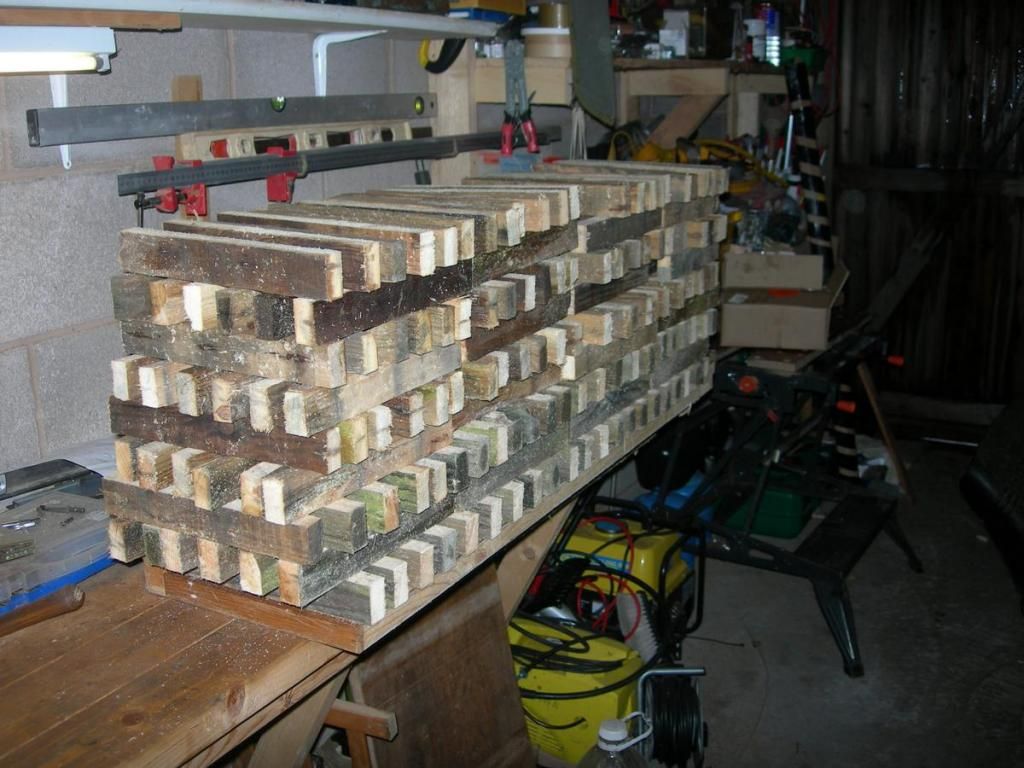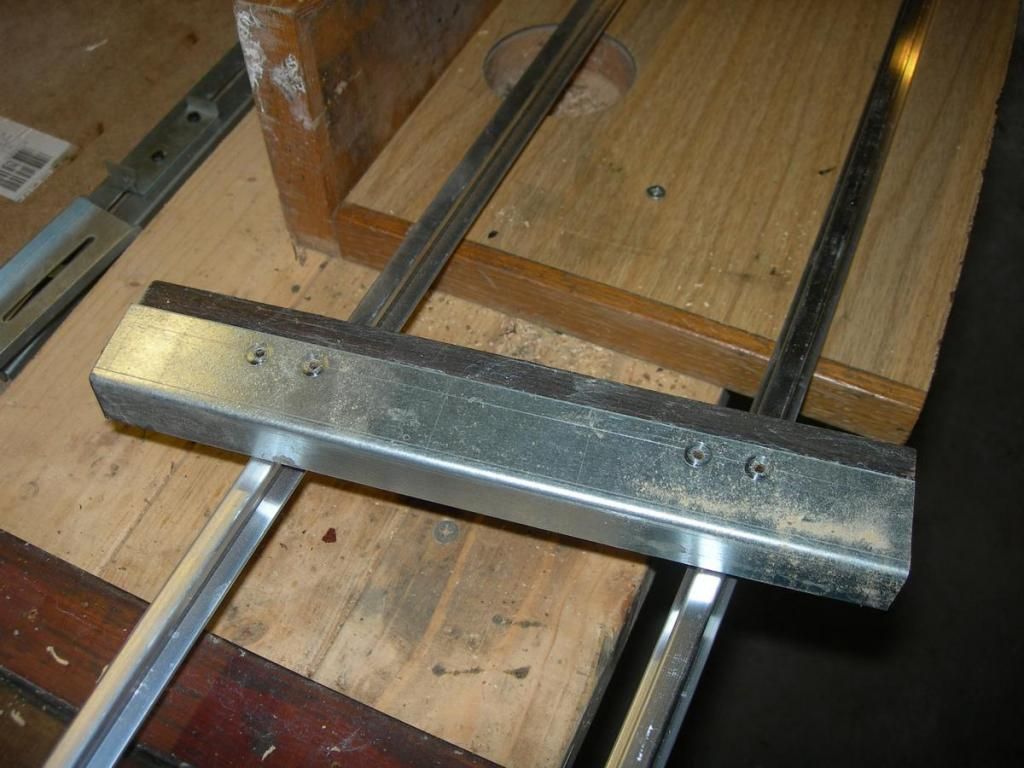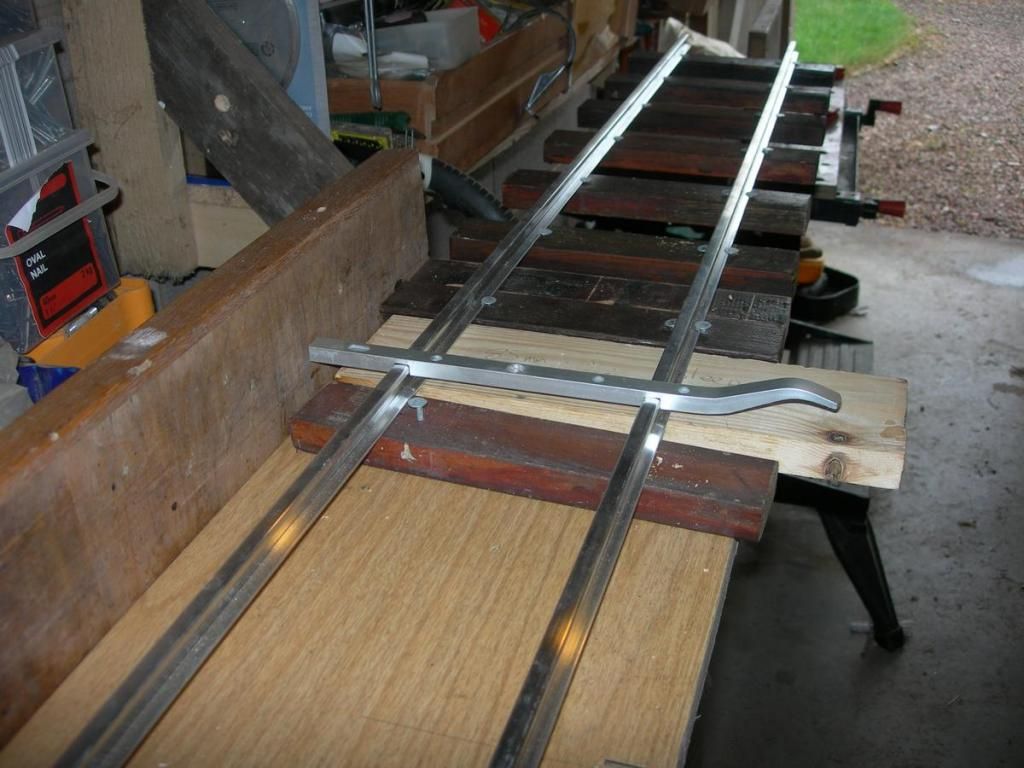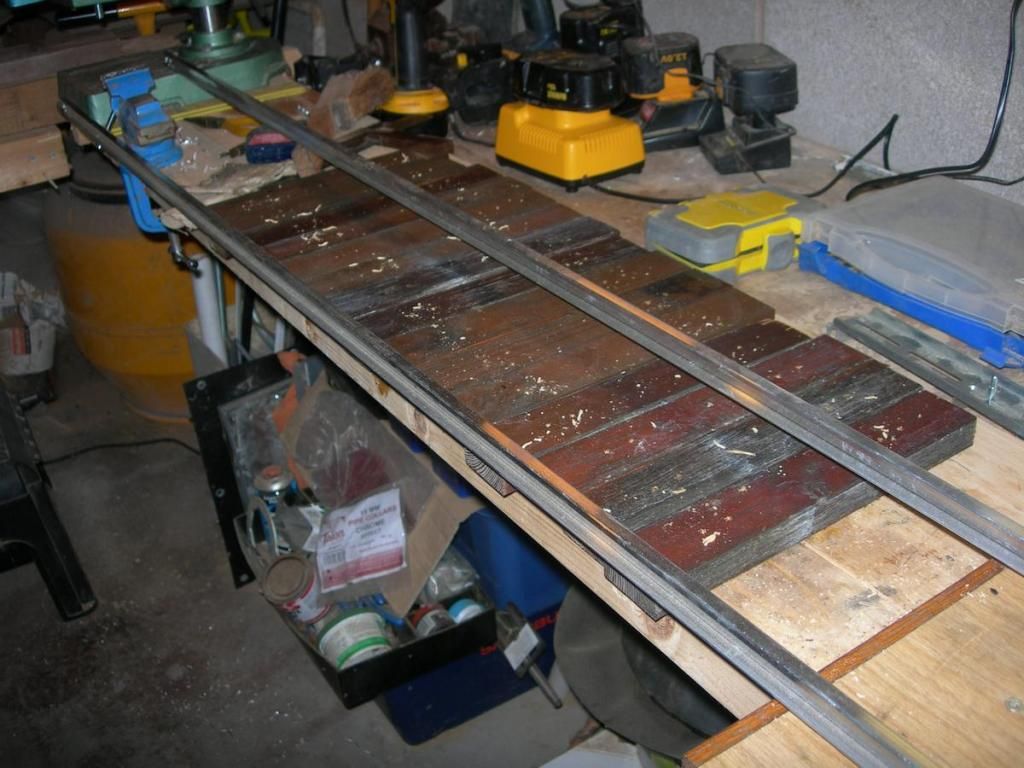This is what 10 tons of ballast looks like:
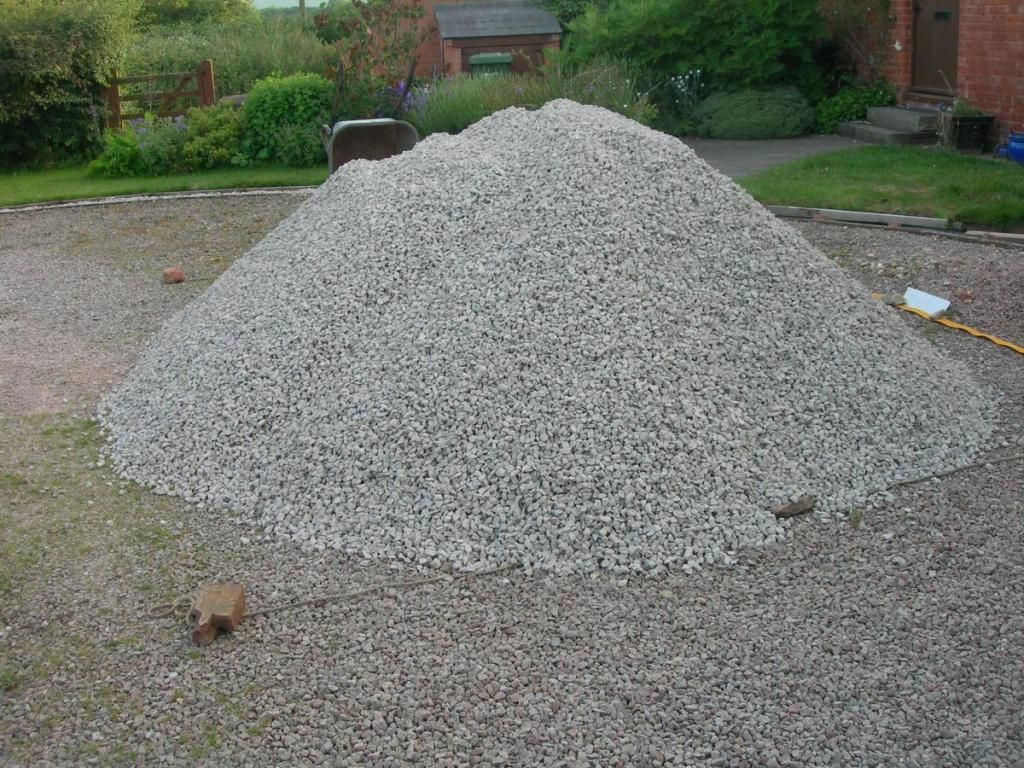
I realise that most of you here use 32 or 45mm, so don't be alarmed, this is not 100 miles of 32mm, it is going to be about 150m of 5inch ground level line. Although this is not the main subject discussed here, I hope it will be of some interest.
In reality, construction has gone beyond this point, but I've been taking photos along the way and plan to tell the story as a "how I did it" because I have always found that approach the most interesting when others have done it and having learnt so much, I want to offer something in return. Please be aware that many of these things will be my mistakes!
I am lucky in that I have plenty of space for 5inch, about 3 acres. However, much of this is an orchard that is commercially harvested and even 5inch track does not mix well with 4wd tractors. This means that the usable area is much less and the planned route stays quite near to the house.
Though I have space, I do not have unlimited funds, and I suspect that what I am building will actually cost less that some of the more extensive 32mm efforts described here. Much will be hand built (except the locomotives, I'm not that skilled an engineer)
Further instalments will follow providing there is some sign of interest!
The view ahead:

Rough line of the trackbed sprayed out to clear the tough field grass.
Coming up: Surveying and the mind bending process of finding levels.





